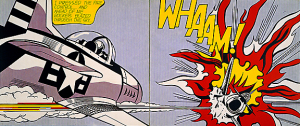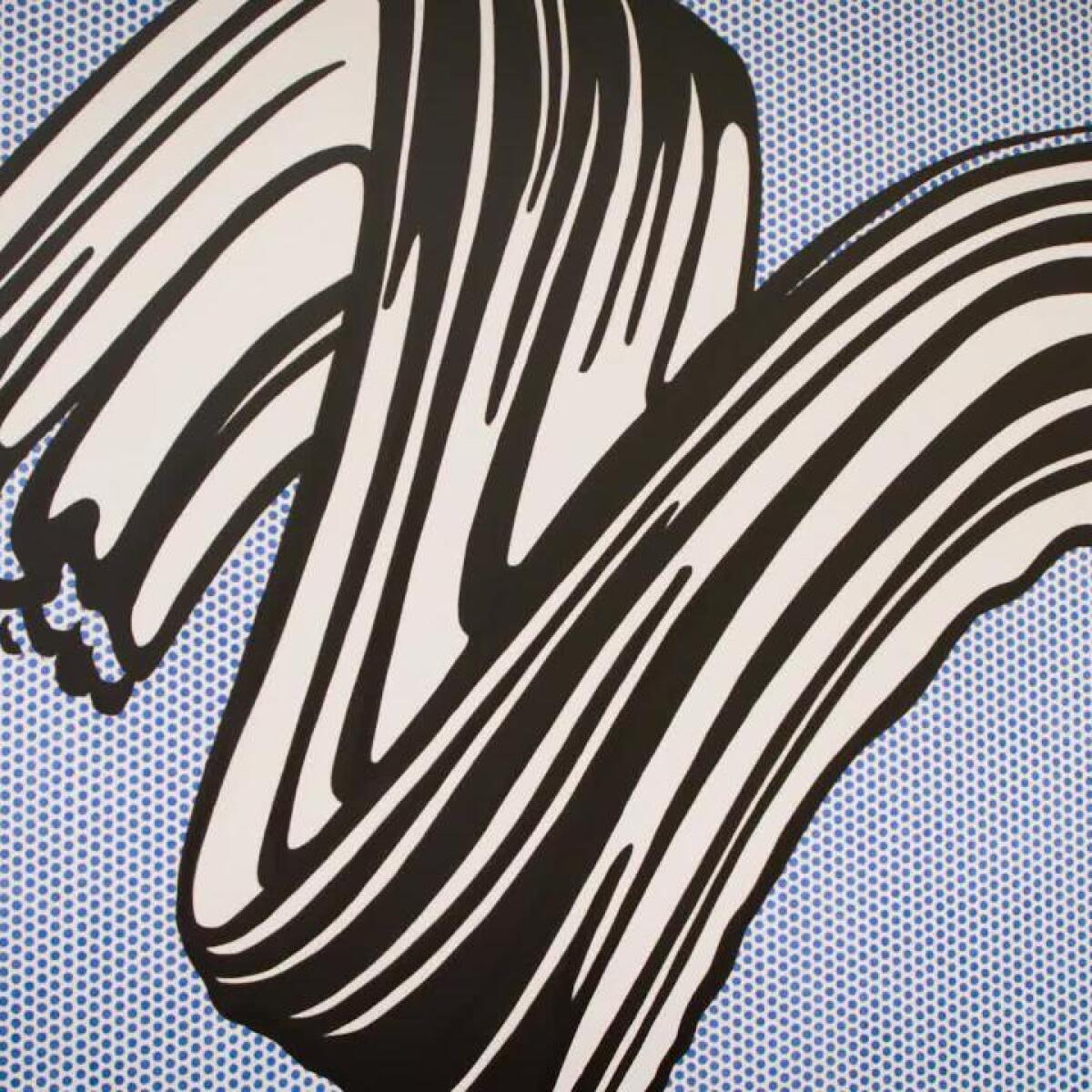


He created sculptural animal figures, as well as portraits and still life works influenced by the work of Pablo Picasso and Georges Braque. Later that year, Lichtenstein enrolled at Ohio State University (OSU), where he studied drawing and design along with botany, history, and literature. In 1940, Lichtenstein began taking Reginald Marsh's painting classes at the Art Students League, producing work very similar to Marsh's social realist style. Oil and synthetic polymer paint on canvas, © Estate of Roy Lichtenstein - The Museum of Modern Art, New York Lichtenstein also condensed the text of the comic book panels, locating language as another, crucial visual element re-appropriating this emblematic aspect of commercial art for his paintings further challenged existing views about definitions of "high" art. Lichtenstein did not simply copy comic pages directly, he employed a complex technique that involved cropping images to create entirely new, dramatic compositions, as in Drowning Girl, whose source image included the woman's boyfriend standing on a boat above her. His work, along with that of Andy Warhol, heralded the beginning of the Pop art movement, and, essentially, the end of Abstract Expressionism as the dominant style. Although artists such as Robert Rauschenberg and Jasper Johns had previously integrated popular imagery into their works, no one hitherto had focused on cartoon imagery as exclusively as Lichtenstein. In the early 1960s, Lichtenstein gained renown as a leading Pop artist for paintings sourced from comic books, specifically DC Comics. Oil on canvas, © Estate of Roy Lichtenstein Whereas most believed this should be achieved with abstract art, Lichtenstein here demonstrated that one could achieve it just as well by borrowing from low culture. Some have suggested that Popeye's punch was intended as a sly response to one of the reigning ideas in contemporary art criticism that a picture's design should make an immediate visual impact. The work is also distinct in being one of the last in which Lichtenstein actually signed his name on the surface of the picture critic Michael Lobel has pointed out that he seems to have done so with increasing uncertainty in this piece, combining it with a copyright logo that is echoed in the form of the open tin can above it. At a later stage he would begin to focus on the generic human figures that appeared in cartoons of the period, but, early on, he chose immediately recognizable characters such as Mickey Mouse and Popeye (here, Popeye appears with his rival Bluto). Popeye was one of the very first Pop paintings that Lichtenstein created in the summer of 1961. This appreciation may also have later encouraged him to make work inspired by masterpieces of modern art in these works he argued that high art and popular art were no different: both rely on code. Arguably, he learned his appreciation of the value of codes from his early work, which drew on an eclectic range of modern painting. Lichtenstein's emphasis on methods of mechanical reproduction - particularly through his signature use of Ben-Day dots - highlighted one of the central lessons of Pop art, that all forms of communication, all messages, are filtered through codes or languages.

The extent of those changes, and the artist's rationale for introducing them, has long been central to discussions of his work, as it would seem to indicate whether he was interested above all in producing pleasing, artistic compositions, or in shocking his viewers with the garish impact of popular culture. Although, in the early 1960s, Lichtenstein was often casually accused of merely copying his pictures from cartoons, his method involved some considerable alteration of the source images.This marked a major shift away from Abstract Expressionism, whose often tragic themes were thought to well up from the souls of the artists Lichtenstein's inspirations came from the culture at large and suggested little of the artist's individual feelings. Art had carried references to popular culture throughout the 20 th century, but in Lichtenstein's works the styles, subject matter, and techniques of reproduction common in popular culture appeared to dominate the art entirely.


 0 kommentar(er)
0 kommentar(er)
